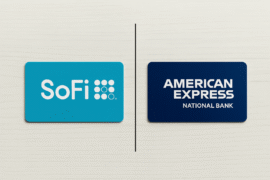This article may contain references to products or services from one or more of our advertisers or partners. We may receive compensation when you click on links to those products or services. Nonetheless, our opinions are our own.
The information presented in this article is accurate to the best of our knowledge at the time of publication. However, information is subject to change, and no guarantees are made about the continued accuracy or completeness of this content after its publication date.
- Key Highlights
- Introduction
- Understanding Balance Transfer Credit Cards
- How It Benefits You
- Different Types of Balance Transfer Cards
- Preparing for a Balance Transfer
- Step-by-Step Guide to Executing a Balance Transfer
- Managing Your New Balance Transfer Card
- Conclusion
-
Frequently Asked Questions
- Can a balance transfer card really save me money?
- How does transferring a balance affect my credit score?
- What happens if I can’t pay off the balance before the promotional period ends?
- Are there limits to how much I can transfer?
- Can I transfer balances from multiple cards?
- Are there any fees associated with balance transfers?
- Recommended Reads
Key Highlights
- A balance transfer credit card allows you to move debt from a card with a high-interest rate to one with a lower interest rate.
- This can help you save significantly on interest, especially if you have a 0% introductory APR offer.
- Be aware of possible fees, like balance transfer fees, which usually range from 3% to 5% of the amount you transfer.
- Plan how to pay off the transferred balance before the introductory period ends to avoid high-interest rates.
- Use balance transfer cards wisely: avoid making new purchases on the card until you pay off the transferred balance to maximize savings.
Introduction
Are you struggling with credit card debt and high interest charges? A balance transfer credit card might be a good choice for you. This card lets you move your debt from a high-interest card to a new one with a lower interest rate. Many times, it even comes with an introductory APR period of 0%. This can help you save money on interest and pay off your debt quicker, especially if your credit score is strong.
Understanding Balance Transfer Credit Cards
A balance transfer credit card allows you to handle high-interest credit card debt more effectively. You can move your debt from old cards to a new card that usually has a lower interest rate. Some new cards may even offer a 0% introductory APR for a limited time.
A lower interest rate can help you save money on interest charges. With less money spent on interest, you can use the extra cash to pay off your debt faster. However, keep in mind that balance transfers often have a transfer fee, typically a small percentage of the amount being moved.
How It Benefits You
A balance transfer involves moving your credit card debt from one card to another. This can save you money in the long run by reducing the amount of interest you pay. The key advantage is obtaining a lower interest rate.
When you transfer your balance to a card with a lower interest rate, especially one with a 0% introductory APR, more of your payment goes toward reducing the principal balance. This allows you to become debt-free faster.
Consolidating multiple high-interest debts into one card with a lower rate simplifies debt management. You only need to remember one monthly payment. Additionally, the new card might have a lower minimum payment, helping you manage your finances more effectively.
Voted "Best Overall Budgeting App" by Forbes and WSJ
Monarch Money helps you budget, track spending, set goals, and plan your financial future—all in one app.
Get 50% OFF your first year with code MONARCHVIP
Different Types of Balance Transfer Cards
Navigating balance transfer credit cards can feel overwhelming, but most cards fall into a few key categories:
- 0% Introductory APR Cards: These cards offer a promotional period, typically lasting 6 to 21 months, during which you pay no interest on transferred balances. This allows you to focus on paying down your debt.
- Low-Interest Rate Cards: These cards have a consistently low interest rate for balance transfers. They’re a good option if you need more time to pay off your debt. Some may waive the annual fee for the first year.
Carefully review the terms and compare offers to find the card that aligns best with your financial goals.
Preparing for a Balance Transfer
Like any major financial decision, planning ahead is crucial for a successful balance transfer.
Evaluating Your Financial Situation
Before initiating a balance transfer, assess your financial situation:
- Credit Score: A strong credit score improves your chances of getting a balance transfer card with favorable terms.
- Outstanding Debt: Determine how much debt you want to transfer and the current interest rates you’re paying. Calculate how much you can save with a balance transfer.
- Credit Utilization Ratio: This ratio measures how much of your available credit you’re using. A lower ratio is better for your credit score. Be aware that opening a new card may affect this ratio.
What You Need to Start the Process
Once you decide to proceed with a balance transfer, gather the necessary information:
- Credit card account numbers for the balances you want to transfer.
- The balances, interest rates, and monthly payments for each card.
- For other debts, such as personal loans, prepare details like the loan balance and account number.
Step-by-Step Guide to Executing a Balance Transfer
Follow these steps to successfully transfer your balances:
Step 1: Choosing the Right Balance Transfer Card
Research credit card offers to find the one that suits your needs. Pay attention to:
- The duration of the introductory APR period.
- The regular APR after the promotional period ends.
- Balance transfer fees.
If you have a good credit score, you’re more likely to qualify for cards with longer 0% introductory periods and lower fees.
Step 2: Applying and Qualifying for the Card
Once you’ve chosen a card, complete the application. Be honest and accurate, as discrepancies between your application and your credit report can cause delays or rejection.
Step 3: Requesting the Balance Transfer
After approval, contact the new card issuer to initiate the transfer. Provide details about the accounts and amounts to be transferred. Remember, balance transfer fees are usually added to your new balance, so factor these into your calculations.
Step 4: Following Up on the Transfer Process
Monitor both your old and new accounts to ensure the balances are transferred correctly. Keep making minimum payments on your old cards until the transfer is complete. Confirm the promotional rate and the due date for your first payment on the new card.
Managing Your New Balance Transfer Card
Congratulations on completing your balance transfer! Now it’s time to use your new card responsibly to achieve your financial goals.
Monitoring Your Balance and Payments
Check your monthly statements regularly for accuracy. Focus on paying off as much of the transferred balance as possible during the introductory period. Setting up reminders or automatic payments can help ensure you don’t miss due dates.
Strategies to Maximize Benefits
- Avoid making new purchases on the balance transfer card until the transferred balance is paid off.
- Create a budget that prioritizes paying down your balance transfer card.
- Keep your credit utilization below 30% to maintain a healthy credit score.
Avoiding Common Pitfalls
Understand potential challenges and take steps to prevent them:
- Reading the Fine Print: Review the terms carefully, especially the regular APR, transfer fees, and other conditions.
- Credit Score Impact: Be aware of how applying for a new card and changing your credit utilization might temporarily affect your score.
Conclusion
Balance transfer credit cards can be a powerful tool for managing debt, but success depends on understanding how they work and using them wisely. By planning ahead, selecting the right card, and staying disciplined with payments, you can save money on interest and reduce your debt effectively. If you have questions, consider seeking expert advice.
Frequently Asked Questions
Can a balance transfer card really save me money?
Yes, transferring your balance to a card with a lower interest rate or 0% APR can significantly reduce interest charges, helping you pay off debt faster.
How does transferring a balance affect my credit score?
Transferring a balance may cause a temporary dip in your credit score due to a hard inquiry. However, responsible use of the new card can improve your score over time.
What happens if I can’t pay off the balance before the promotional period ends?
If you don’t pay off the balance within the promotional period, the remaining balance will accrue interest at the card’s regular APR, which may be much higher.
Are there limits to how much I can transfer?
Yes, the amount you can transfer is typically limited by your new card’s credit limit, minus any applicable transfer fees.
Can I transfer balances from multiple cards?
Yes, you can consolidate debts from multiple cards onto one balance transfer card, making debt management simpler.
Are there any fees associated with balance transfers?
Yes, balance transfer fees typically range from 3% to 5% of the transferred amount. Some cards may waive this fee as a promotional offer.

Reviewed and edited by Albert Fang.
See a typo or want to suggest an edit/revision to the content? Use the contact us form to provide feedback.
At FangWallet, we value editorial integrity and open collaboration in curating quality content for readers to enjoy. Much appreciated for the assist.
Did you like our article and find it insightful? We encourage sharing the article link with family and friends to benefit as well - better yet, sharing on social media. Thank you for the support! 🍉
Article Title: How Does a Balance Transfer Credit Card Work: The Basics
https://fangwallet.com/2025/02/15/how-does-a-balance-transfer-credit-card-work/The FangWallet Promise
FangWallet is an editorially independent resource - founded on breaking down challenging financial concepts for anyone to understand since 2014. While we adhere to editorial integrity, note that this post may contain references to products from our partners.
The FangWallet promise is always to have your best interest in mind and be transparent and honest about the financial picture.
Become an Insider

Subscribe to get a free daily budget planner printable to help get your money on track!
Make passive money the right way. No spam.
Editorial Disclaimer: The editorial content on this page is not provided by any of the companies mentioned. The opinions expressed here are the author's alone.
The content of this website is for informational purposes only and does not represent investment advice, or an offer or solicitation to buy or sell any security, investment, or product. Investors are encouraged to do their own due diligence, and, if necessary, consult professional advising before making any investment decisions. Investing involves a high degree of risk, and financial losses may occur including the potential loss of principal.
Source Citation References:
+ Inspo












































